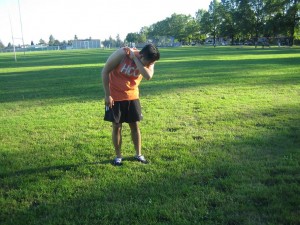Nose piercing involves perforating of the skin or cartilage of the nose for wearing jewelry. Among the diverse varieties of nose piercing, nostril piercing is the most common.
https://www.youtube.com/watch?v=MQ8H6MJ0qVg
Piercing on the nose involves denser flesh and the nose contains plenty of bacteria which increases the risk for infection.
Symptoms of an infected nose piercing
- Severe pain, redness, swelling, heat or tenderness around the affected area.
- Red and inflamed streaks or marks in the skin that spreads out from the nose piercing.
Severe pain, redness, swelling, heat or tenderness around the affected area. - Yellow-green pus-like discharge drains from the affected area. It is normal when there is little oozing or bleeding from the site, but if there is pus with swelling and redness, it should be treated immediately.
- Tender and swollen lymph glands above or below the piercing
- Development of fever
- Foul smell around the affected area
Treatment
- If there is an infection, take the prescribed antibiotic cream or tablets. Apply the cream or take the tablets for at least 10 days to 2 weeks. Take the full course of the antibiotic to prevent recurrence of the condition.
- Before touching the area, keep the hands clean by washing them thoroughly using warm water and antibacterial soap. Pump soap in a cotton swab and gently swab around the affected area to eliminate any dried or crusted substance.
- Rinse the area using warm water. Pat the nose dry using a clean paper towel but avoid bumping the piercing.
- In a paper cup, mix a small spoonful of sea salt. Fill it with hot water that can be tolerated. Soak a cotton ball in the salt water solution and wring out the excess water. Press gently the hot cotton ball on the infected nose piercing and let it remain until the cotton ball becomes cool and then throw it away. An alternative is soaking the affected nose in saline solution to thoroughly clean the nose piercing is also good for the condition.
- Rinse off the area using warm water to wash off any residue of salt and pat dry the nose using a clean paper towel. Repeat this process at least 2 times every day until the infection is gone.
- Avoid removing the nose stud to prevent the possibility of causing an abscess. If allergic to the stud with symptoms such as burning sensation on the skin, enlarging wound and clear yellow discharge, remove the stud immediately.
- Make a paste using aspirin which has anti-inflammatory properties. Put a few drops of water on the aspirin and mix until it becomes a paste and apply on the infected stud.
More Information
The details posted on this page on an infected nose piercing is for learning purposes only. To learn to recognize and manage an infected wound, enroll in a first aid course with one of our training providers.

